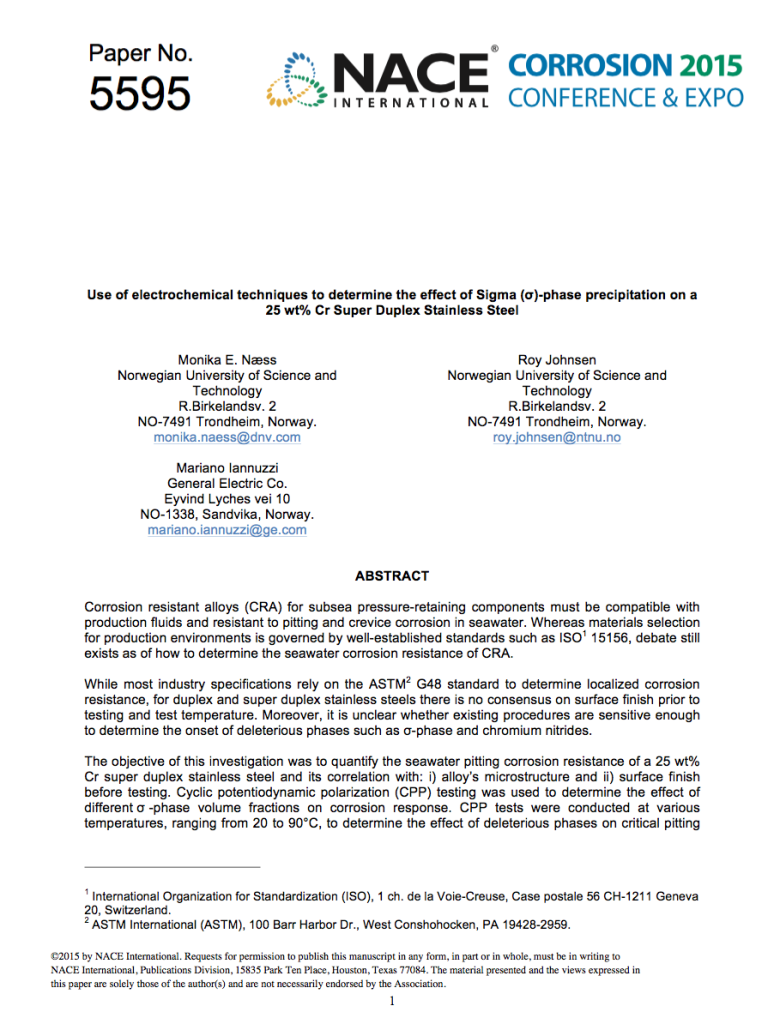Together with my colleagues Monika Næss and Prof. Roy Johnsen, we published this paper on the use of electrochemical techniques to assess the effect of sigma phase on the localized corrosion resistance of 25% Cr super duplex stainless steels, during the NACE CORROSION 2015 annual conference. The paper was presented at the “Mechanisms of localized corrosion” symposium. The full manuscript can be downloaded HERE or by clicking on the figure below. The final presentation can be downloaded HERE.
Abstract
Corrosion resistant alloys (CRA) for subsea pressure-retaining components must be compatible with production fluids and resistant to pitting and crevice corrosion in seawater. Whereas materials selection for production environments is governed by well-established standards such as ISO1 15156, debate still exists as of how to determine the seawater corrosion resistance of CRA.
While most industry specifications rely on the ASTM G48 standard to determine localized corrosion resistance, for duplex and super duplex stainless steels, there is no consensus on surface finish prior to testing and test temperature. Moreover, it is unclear whether existing procedures are sensitive enough to determine the onset of deleterious phases such as σ-phase and chromium nitrides.
The objective of this investigation was to quantify the seawater pitting corrosion resistance of a 25 wt% Cr super duplex stainless steel and its correlation with:
- alloy’s microstructure and
- surface finish before testing.
Cyclic potentiodynamic polarization (CPP) testing was used to determine the effect of different σ-phase volume fractions on corrosion response. CPP tests were conducted at various temperatures, ranging from 20 to 90°C, to determine the effect of deleterious phases on critical pitting and crevice temperatures (CPT and CCT, respectively). CPP results were compared with reported values based on ASTM G48 method D, ASTM G150, and zero resistance amperometry.

Citation
M. Næss, M. Iannuzzi, R. Johnsen, “Use of electrochemical techniques to determine the effect of Sigma (σ)-phase precipitation on a 25 wt% Cr Super Duplex Stainless Steel”, CORROSION/15, Paper No. 5595 (NACE International, Dallas, TX, March 15-19, 2015).
Presentation
A copy of the final presentation can be accessed HERE.